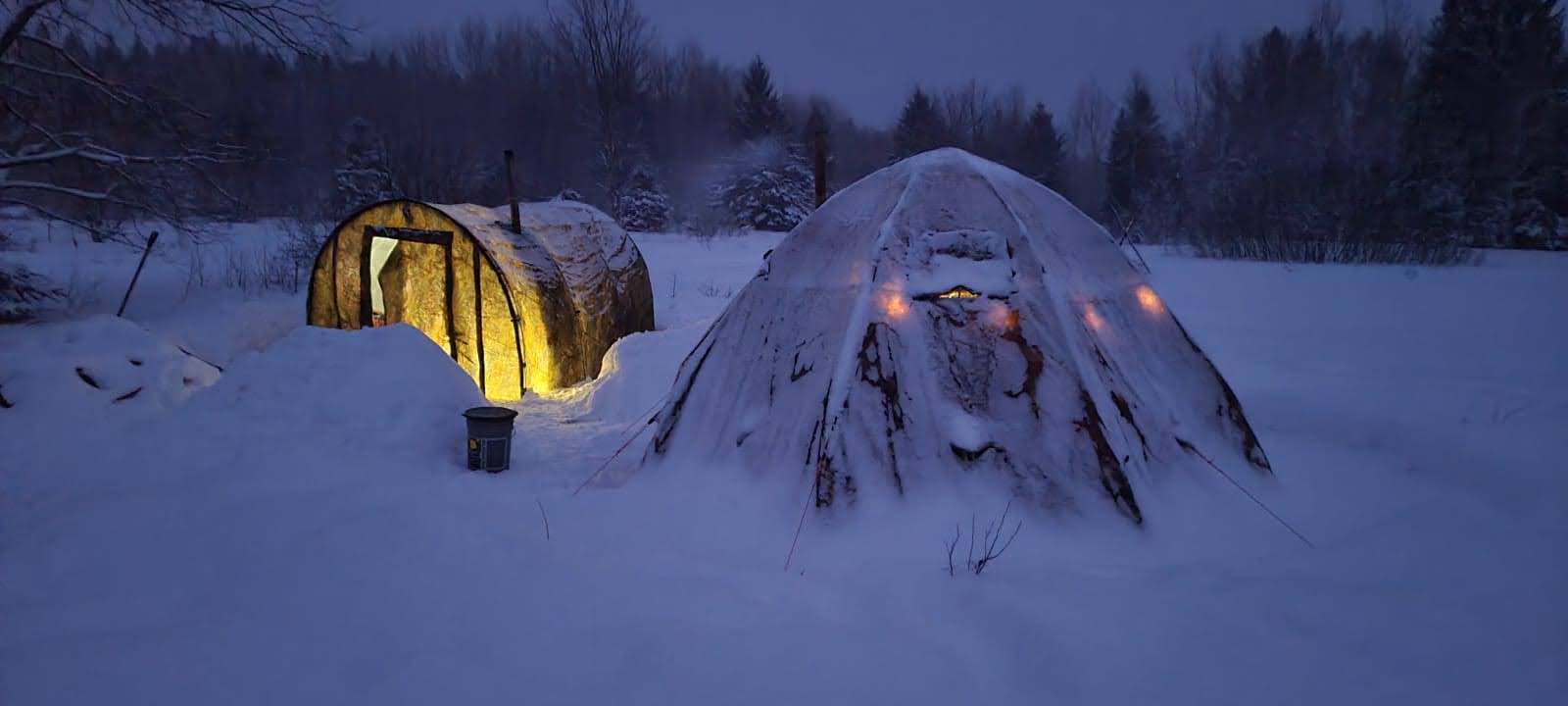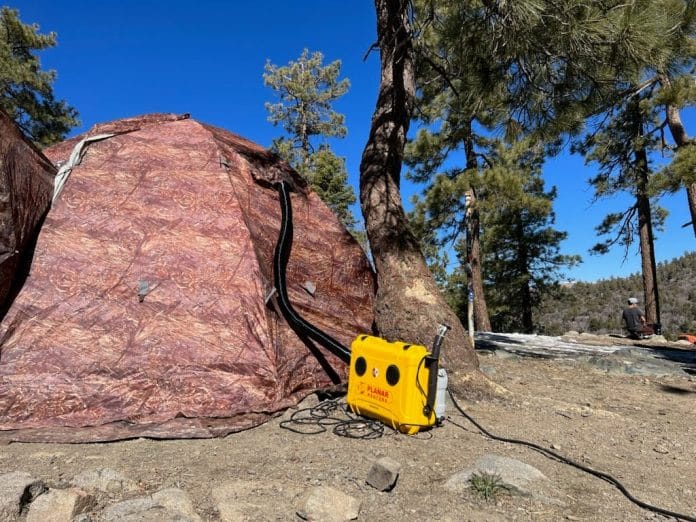Camping in remote areas can be one of the most rewarding outdoor experiences you’ll ever have. It allows you to escape the crowds, reconnect with nature, and test your self-sufficiency.
But venturing into the wild requires gear that won’t let you down. At the heart of your setup is your tent. It’s a piece of equipment that can make or break your trip. Choosing the right one isn’t just about comfort; it’s about safety and survival.
Unlike camping in established campgrounds, where you might have quick access to your vehicle or even a nearby store, camping in remote areas requires absolute trust in your shelter. This is why looking at features beyond the basic marketing claims is essential. Weather resistance, ventilation, setup design, and durability all come into play. A tent like the Bereg UP-5, a true all-season tent, serves as an excellent case study of the kind of performance you should demand when heading off the beaten path.
In this article, we’ll dive into the top features to look for in a tent when camping in remote areas. We’ll use the Bereg UP-5 (a tent I’ve used extensively over the years) as an example throughout, as it embodies many of the qualities needed for harsh and unpredictable environments. By the end, you’ll know exactly what to prioritize in your next tent purchase.
Table of Contents
- Durability and Materials Matter
- Weather Resistance and 4-Season Performance
- Ventilation and Condensation Control
- Ease of Setup in Challenging Environments
- Space and Livability
- Portability and Weight Considerations
- Safety Features for Remote Camping
- FAQ
Durability and Materials Matter

When camping in remote areas, durability is non-negotiable. Your tent needs to withstand abrasive terrain, high winds, and extended use without failing. Materials like ripstop nylon or high-grade canvas are popular for their strength and longevity. The Bereg UP-5, for instance, uses a strong, waterproof Oxford fabric designed to endure punishing weather conditions without tearing or leaking.
Poles are another critical factor. Many lightweight tents use aluminum or composite poles, but if you’re setting up in an area with unpredictable storms, heavier-duty supports are worth the extra weight. The UP-5 features a robust frame structure that’s designed to remain stable even in extreme wind, giving campers peace of mind when weather conditions shift unexpectedly.
Weather Resistance and 4-Season Performance

The further you get from civilization, the more important it becomes to have a tent that can truly withstand all four seasons. Marketing labels can be misleading, as some so-called “4-season” tents are really just extended 3-season tents with a little extra reinforcement. When camping in remote areas, you need a tent that can handle snow loads, torrential rain, and blasting winds.
This is where the Bereg UP-5—the original, authentic four-season tent—shines. It’s built with a high waterproof rating and designed with a conical, yurt-like shape that sheds snow efficiently. The tent also includes stove compatibility, allowing you to use a safe wood-burning stove inside during winter camping. This is something that sets it apart from many typical backpacking tents. That combination of weather protection and livability makes the UP-5 a true remote-area companion.
Ventilation and Condensation Control

Condensation buildup is one of the biggest challenges campers face, especially in colder or more humid environments. Without proper ventilation, moisture accumulates inside the tent, leading to damp sleeping bags and an uncomfortable experience. A good tent for camping in remote areas should balance warmth with airflow.
The Bereg UP-5 incorporates multiple vent openings to help air circulate even when the stove is in use. Its design allows campers to manage airflow depending on the weather—close the vents during a snowstorm, or open them up when things warm up. This type of flexibility is exactly what you want in a remote-area tent, where conditions can shift quickly.
Ease of Setup in Challenging Environments

When the sun sets quickly in the backcountry or you’re dealing with foul weather, the last thing you want is a complicated tent setup. A tent for camping in remote areas should be intuitive, allowing for fast pitching even when conditions are working against you.
The Bereg UP-5’s frame structure is designed to be assembled quickly with minimal fuss, despite its size. For such a large tent, many users find they can have it standing in less than 20 minutes. That reliability can make the difference between getting warm and dry quickly versus struggling in the elements.
Space and Livability

Comfort may not be the first thing on your mind when planning a remote camping trip, but it plays a huge role in your overall experience. Cramped quarters make it harder to relax, recover, and enjoy your time outdoors. Having enough headroom, gear storage, and room for cooking or even heating can turn a challenging trip into an enjoyable one.
The Bereg UP-5 excels in livability. It comfortably fits up to five people and allows campers to stand inside, making it ideal for extended stays in the wilderness. Its ability to house a wood stove is another major advantage, transforming it from just a shelter into a livable space, which is crucial when you’re days away from the nearest town.
Portability and Weight Considerations

Every ounce counts when backpacking, but when camping in remote areas with the aid of a vehicle, ATV, or sled, the priorities shift. You may be able to carry a slightly heavier tent if it means far greater durability, weather resistance, and comfort. The Bereg UP-5 weighs significantly more than a lightweight backpacking tent, but for those traveling deeper into the wild where reliability trumps minimalism, the weight is justified.
It’s a matter of knowing your situation. If you’re trekking on foot for days, an ultralight setup might still be necessary. But if your remote camping involves hauling gear by truck or snowmobile, the Bereg UP-5’s balance of bulk and bombproof construction makes it a smart trade-off.
Safety Features for Remote Camping

Safety becomes a top priority when you’re camping far away from help. Look for features that reduce risks, such as reinforced guy lines, fire-resistant materials, and visibility in low-light conditions. A strong tent keeps you anchored during storms and shields you from environmental hazards.
The Bereg UP-5 includes fire-resistant materials and a safe chimney exit for stove use, making it one of the few tents designed to accommodate heating without compromising safety. That’s an invaluable feature when temperatures plummet, and it underscores why a tent like this is well-suited to remote, cold-weather trips.
FAQ

Is the Bereg UP-5 too heavy for backpacking?
Yes, at over 50 pounds, the Bereg UP-5 is not designed for backpacking. It’s best suited for remote camping where you can transport gear with a vehicle, ATV, or sled.
Can you safely use a stove inside the Bereg UP-5?
Yes. The tent includes fire-resistant materials and a chimney port, making it one of the few tents designed for safe stove use in winter conditions.
How many people can the Bereg UP-5 fit comfortably?
The tent fits up to five people comfortably, with room for gear and space to stand, making it ideal for longer remote trips.
Why choose the Bereg UP-5 over a lightweight 4-season tent?
Lightweight 4-season tents are great for backpacking, but they often sacrifice comfort and livability. The UP-5 prioritizes durability, space, and the ability to handle extreme weather, making it better suited for remote, stationary camping.
What makes a tent good for camping in remote areas?
Durability, true weather resistance, good ventilation, ease of setup, and safety features are essential. A tent like the Bereg UP-5 combines all these elements, making it a reliable shelter far from civilization.
Our articles might have affiliate links and the occasional sponsored content, but don’t sweat it – if you buy something, we get a little kickback at no extra cost to you, and we only hype products we truly believe in!




